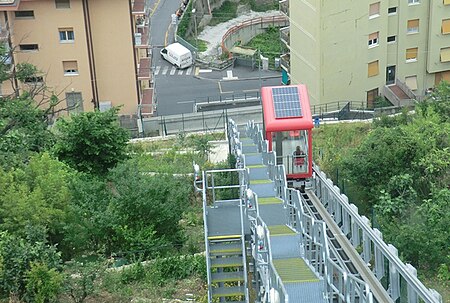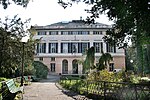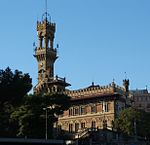Quezzi inclined elevator

The Quezzi elevator (Italian: Ascensore inclinato di Quezzi) is a public inclined elevator with variable slope in the Quezzi quarter of Genoa, Italy. The elevator opened in May 2015 and connects the lower terminus at Via Pinetti to the terminus at Via Fontanarossa, with an intermediate stop at Portazza.The plant is one of the many public people movers in the city, including several elevators and funiculars, the older and best known of which are the Zecca–Righi funicular, the Sant'Anna funicular and the Principe–Granarolo rack railway. The latter is erroneously described as a funicular in popular jargon. From 1 December 2021 it has been free to use courtesy of the Municipality of Genoa and AMT.
Excerpt from the Wikipedia article Quezzi inclined elevator (License: CC BY-SA 3.0, Authors, Images).Quezzi inclined elevator
Via Susanna Fontanarossa, Genoa Bassa Val Bisagno
Geographical coordinates (GPS) Address Nearby Places Show on map
Geographical coordinates (GPS)
| Latitude | Longitude |
|---|---|
| N 44.421173 ° | E 8.971611 ° |
Address
Via Susanna Fontanarossa 42
16144 Genoa, Bassa Val Bisagno
Liguria, Italy
Open on Google Maps









